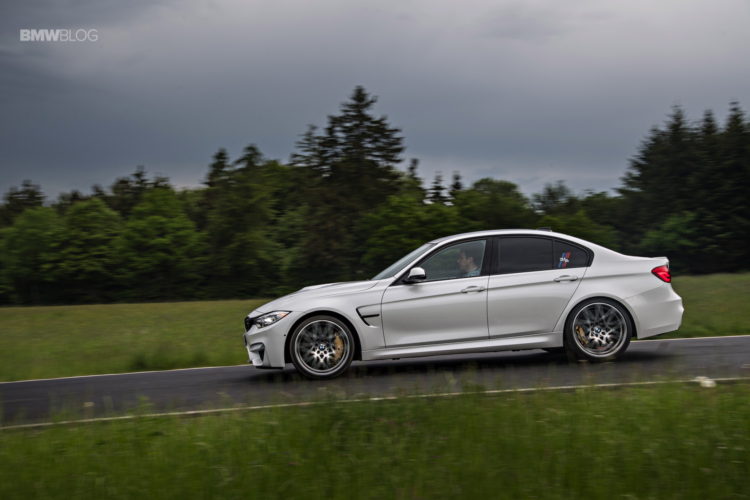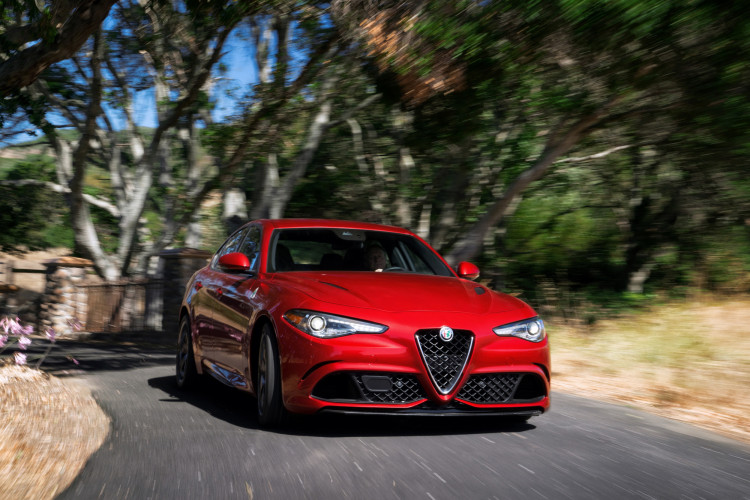Ever since news broke about Alfa Romeo building a sport sedan, the entire automotive world started making comparisons between it and the BMW M3. The M3, after all, is the car that defines the segment, so it makes sense to compare every newcomer to it. When the Alfa Romeo Giulia Quadrifoglio finally did come out, it made quite a stir. Its massive power, impressive Nurburgring time and Italian flare made it the car that many felt would be better than the M3. So is it any better? Motor Trend recently found out.
The test actually started out between four cars: the Mercedes-AMG C63 S, Cadillac ATS-V, BMW M3 Competition Package and Alfa Quadrifoglio. But they needed to eliminate two of the first three to see which would go up against the new Alfa. So they put the BMW, AMG and Caddy on the track and set some lap times. The BMW M3 beat the other two out, so we finally got the match we were waiting for — BMW M3 Comp Pack vs Alfa Romeo Giulia Quadrifoglio.

If you were to compare the Alfa to the standard M3, it probably wouldn’t even be close. The standard F80 BMW M3 is, unfortunately, not good enough to live up to the supreme reputation of its nameplate. It’s sloppy, too tail-happy and lacks the sort of tactility BMW M3s were always known for. However, the Competition Package seriously changes the entire car. We noticed this in our testing as well, as the Comp Pack breathes new life into the M3, making it sharper, more dynamic and more exciting. It’s what the M3 should have been all along. Motor Trend was originally very harsh on the standard F80 M3 when it first came out, as were most journalists, but they seem to have warmed to the Comp Pack, choosing it over the Cadillac and AMG.
So, how does this newly revised M3 handle the brand-new Alfa Romeo? Well, it’s about as evenly matched as it gets. While the Alfa has way more power, making 505 hp compared to the BMW M3 Comp Pack’s 444 hp, they’re both about as fast to 60 mph, doing the sprint in about 3.8 seconds. They both have automatic gearboxes (an eight-speed ZF for the Alfa and a seven-speed DCT for the Bimmer) and are both rear-wheel drive. So they stack up pretty well on paper.
Things were just as similar at the race track. The BMW M3 was only 4 tenths behind the Alfa Romeo Giulia Quadrifoglio at the track with Randy Pobst at the wheel (2:00.61 for the BMW and 2:00.22 for the Alfa). So it came down to how both cars are on the road.

Ultimately, the Alfa was the sweeter driving car of the two on the road. Its inputs are just a bit better, its chassis is a bit more composed and it’s just a bit more enjoyable to drive. The BMW M3 makes up for a lot of that by being the easier car to live with everyday, being that its technology is far superior and its ergonomics are far better, but it’s the Alfa Romeo that they would rather drive. They even went as far as to say that, dynamically, the Alfa Romeo was perfect.
In the end, they give the Alfa the victory over the BMW M3 but by a small margin. If the Alfa had never come out, BMW’s Competition Package would be enough to propel the M3 to the top of the heap. However, as MT points out, no one was ready for how good the Alfa Romeo Giulia Quadrifoglio is and it sucker punched BMW and the rest of the industry.





































































